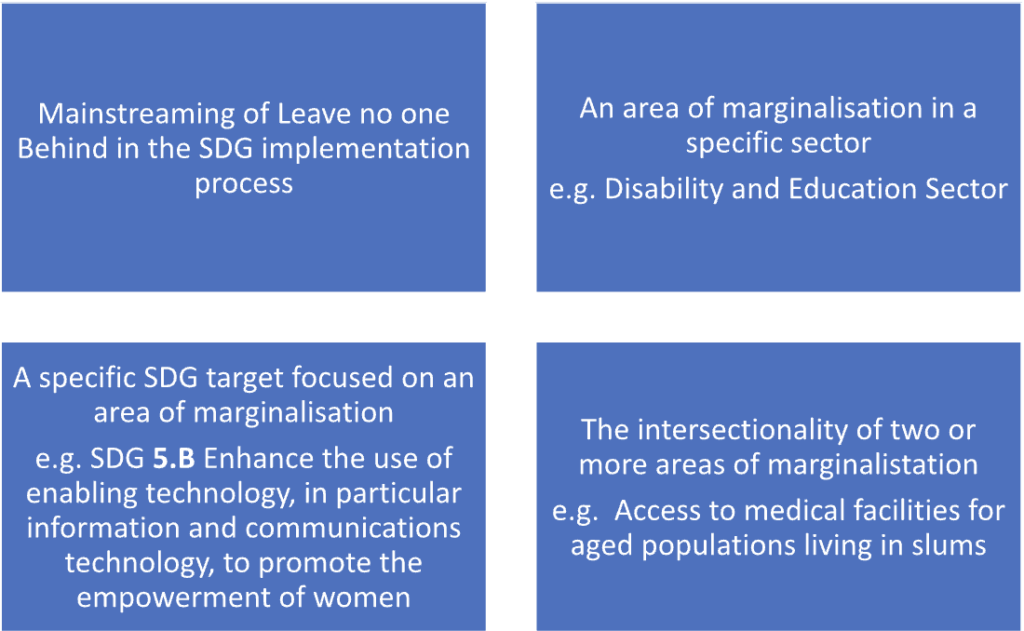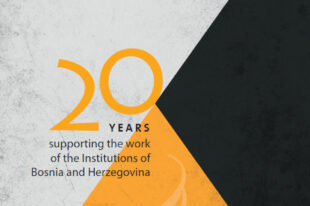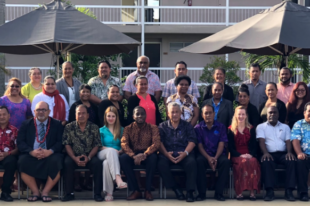How are governments ensuring that no one is left behind? IDI and UN Women are developing a ‘Leave No One Behind’ Audit Framework

What does it mean to implement the SDG principle of ‘Leave no one Behind’? How can SAIs’ audit the implementation of this principle by governments?
After more than seven years of the adoption of the 2030 Agenda for Sustainable Development and several audits of SDGs, these questions still pop up in the minds of those implementing SDGs and those of us auditing this implementation. ‘Please provide us detailed guidance on auditing leave no one behind’ – was the request we received from a number of SAIs providing feedback on the IDI’s SDGs Audit Model (ISAM).
To respond to this request, the IDI has teamed up with our partners from UN Women to explore how SAIs can examine the implementation of the pledge nations made-
As we embark on this great collective journey, we pledge that no one will be left behind. Recognizing that the dignity of the human person is fundamental, we wish to see the Goals and targets met for all nations and peoples and for all segments of society. And we will endeavor to reach the furthest behind first. (Paragraph 4)’
The Leave No One Behind Audit Framework will be a part of the update to IDI’s SDGs Audit Model (ISAM). It will answer three main questions :
- What is the concept of Leave No One Behind?
This section will reflect on who is left behind and why it happens? It will delve into the concept of vulnerability and marginalisation, while looking at factors like poverty, gender, ethnicity, age, migration, disability and above all the intersectionality of these causes. We will look at how the SDGs, targets and indicators relate to the concept of leave no one behind. The write up will then provide illustrations of government actions to implement this principle and also examine how the social, political, and economic context of the country impact the government efforts to leave no one behind.
- Why does the Leave No One Behind principle matter?
This part of the framework intends to bring concrete aspects regarding the importance of the Leave No One Behind principle. It will present facts and illustrations depicting the effects and consequences that happen when people are left behind, and the impact for the society.
- How can SAIs audit the implementation of the principle by governments?
This will be the most practical, hands-on part of the framework. In this part we will reflect on possible entry points for SAI auditors to examine the implementation of this principle. Such entry points could include examination of:

There could also be several other entry points for SAIs to conduct these audits. We recommend that while determining the entry point SAIs take into consideration – the national priorities and situation in the country, keep the audit scope manageable, identify an audit scope that allows the use the whole of government approach required in an SDG audit and most importantly build a ecosystem of stakeholders to facilitate audit quality and impact.
This section will provide a few examples and illustrations of such audits. It will also reflect on the capacities and processes required to conduct such audits on a regular basis and to achieve visualised audit impact.
As we embark this work, we welcome suggestions and inputs from the readers. If your SAI has an appropriate case or example to contribute to the development of this audit framework, please write to us.
Contact Maria Lucia Lima with the INTOSAI Development Initiative at: maria.lima@idi.no





